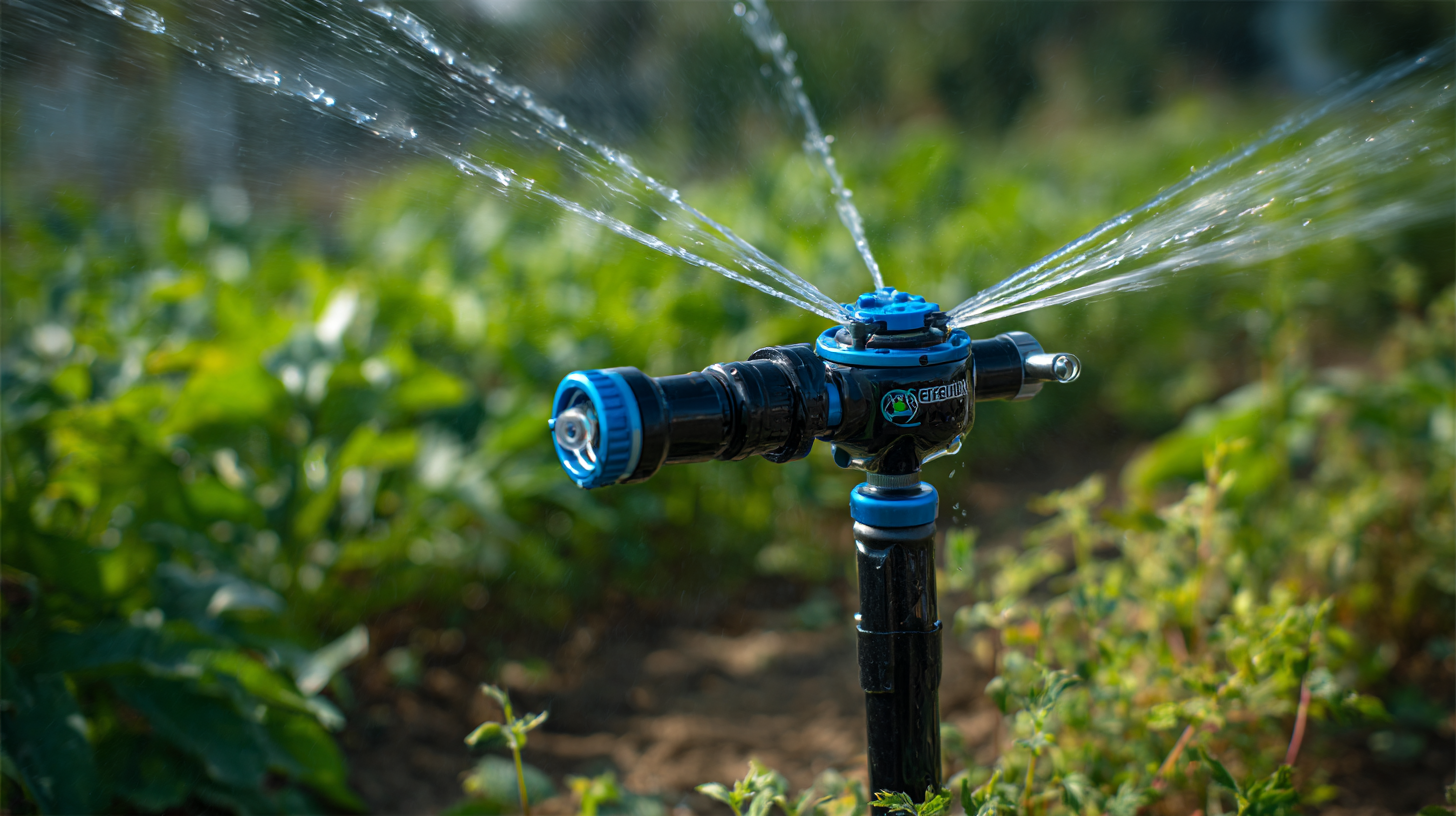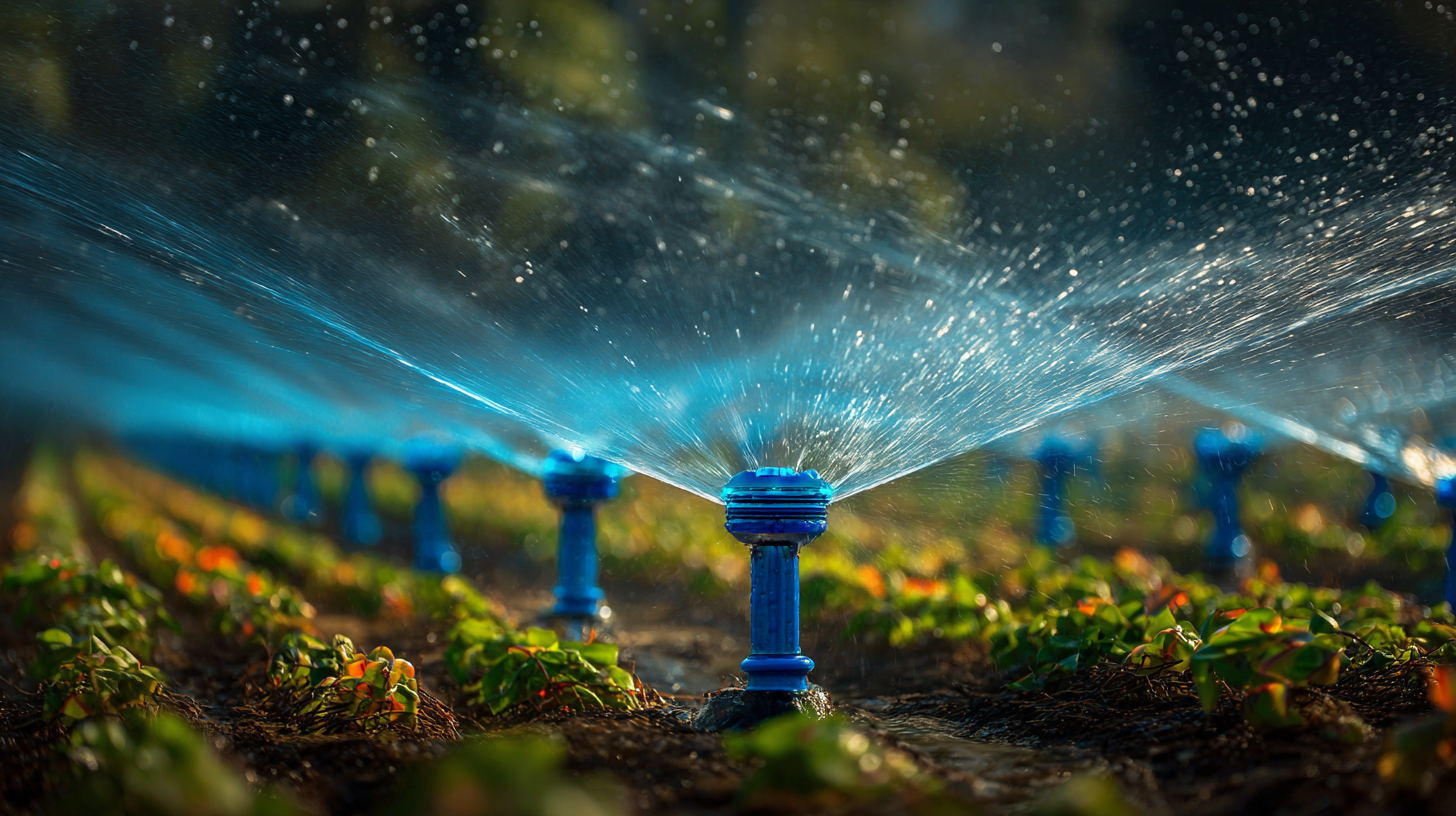In the ever-evolving world of irrigation technology, the rotating sprinkler system has emerged as a game-changer for both residential and commercial landscapes. According to a report by the Irrigation Association, efficient irrigation can save up to 50% more water compared to conventional methods, and rotating sprinklers play a pivotal role in this efficiency. Designed to deliver precise water coverage and reduce runoff, these advanced systems not only enhance the health of your lawn and garden but also contribute to sustainable water usage. As climate concerns continue to grow, understanding the technical specifications and optimal setup of rotating sprinklers becomes essential for anyone looking to maximize irrigation efficiency. This ultimate guide aims to unlock the power of rotating sprinkler systems, providing insights and practical advice to help you achieve the best results for your irrigation needs.

Understanding the key technical specifications of rotating sprinklers is crucial for achieving efficient irrigation. Rotating sprinklers are designed to deliver water evenly across various landscapes, and their effectiveness can be influenced by several parameters. Key specifications include flow rate, range, and pattern of water distribution. According to the Irrigation Association, a well-calibrated rotating sprinkler can use up to 30% less water compared to conventional static sprinklers while still maintaining optimal coverage.
When selecting a rotating sprinkler, pay attention to the flow rate, which usually ranges from 1 to 4 gallons per minute (GPM). This will determine how much water your landscape receives and can help prevent over- or under-watering. Additionally, consider the radius of coverage; most rotating sprinklers cover areas from 15 to 30 feet. Properly setting the sprinkler heads to avoid overlap reduces water waste and promotes efficiency.
Tip: Regularly check and maintain your rotating sprinkler system to ensure no blockages or malfunctions are present. This will maximize performance and prevent unnecessary water loss. Another effective strategy is to test your system with a rain gauge to monitor the amount of water being applied and adjust your irrigation schedule accordingly for optimal results.

When it comes to optimizing your irrigation system, evaluating the effectiveness of rotating sprinklers is essential. Industry standards play a crucial role in determining how well these devices perform under various conditions. To assess their efficiency, metrics such as uniformity, distribution pattern, and water application rate should be considered. These factors not only influence the health of your plants but also impact water conservation efforts. A high uniformity coefficient indicates that your rotating sprinkler is distributing water evenly, reducing waste and ensuring each plant receives the necessary hydration.

Moreover, it is important to investigate the specifications that define the performance of rotating sprinklers. Look for features such as adjustable spray radius, flow rate, and rotation speed. Modern rotating sprinklers often come with advanced technologies that allow for customizable settings, tailored to the specific needs of your garden or landscape. By understanding these specifications and industry metrics, homeowners and landscapers can make informed decisions, leading to more effective irrigation solutions that enhance plant growth while promoting sustainable water usage.
Identifying quality suppliers for rotating sprinklers is crucial in a competitive marketplace where efficiency and reliability can significantly impact agricultural productivity. According to a report by the Irrigation Association, proper irrigation accounts for up to 40% of overall crop yield, making the selection of high-quality equipment vital. Suppliers with a history of innovations and standards compliance, such as ISO certifications, often provide superior products ranging from efficiency ratings to durability assessments.
When searching for suppliers, consider these tips: first, verify their experience and longevity in the industry. Suppliers who have been operating for years usually have a track record of performance. Second, look for reviews and testimonials from other customers. Analyzing feedback can reveal the reliability and customer support of the supplier. Lastly, compare the technical specifications of their sprinklers. A reputable supplier should provide transparent data on flow rates, coverage patterns, and compatibility with various irrigation systems.
It's also important to monitor emerging technologies within the irrigation sector. As highlighted in the 2021 AgFunder report, smart irrigation technologies are gaining traction, allowing for more precise water usage and significant savings. As you identify potential suppliers, ensure they are adapting to these advances, which will not only optimize your irrigation strategy but also enhance overall sustainability efforts in agricultural practices.
This chart illustrates the performance comparison of different rotating sprinklers based on their effective range in meters. Choosing the right sprinkler with optimal range can enhance irrigation efficiency and water conservation.
Proper setup of rotating sprinklers is crucial for maximizing irrigation efficiency. Research indicates that improper sprinkler installation can lead to water waste, with studies showing that up to 30% of water can be lost due to uneven coverage and overlapping spray patterns. To ensure uniform water distribution, it’s essential to design a layout that considers the sprinkler's throw distance and overlap rates. For example, rotating sprinklers typically have a radius of 15 to 50 feet, so spacing them appropriately—usually one sprinkler’s distance apart—will prevent dry spots and overwatering.
Tips for optimal setup include adjusting the sprinkler heads to match the terrain's slope and using timers to align watering schedules with the weather forecast. This reduces water usage during rainy seasons. Additionally, regular maintenance checks on the sprinkler system can help identify and fix any issues early, ensuring consistent performance. A study by the Irrigation Association found that systems with automated timers can save up to 50% more water compared to manual systems, underlining the effectiveness of proper irrigation technology.
Lastly, implementing efficient practices like grouping plants with similar watering needs together can improve overall irrigation efficiency. By following best practices for irrigating, not only will you conserve water, but also promote healthier plant growth.
| Specification | Value | Optimal Setup Practices | Irrigation Efficiency (%) |
|---|---|---|---|
| Spray Radius | 15-30 ft | Adjust nozzle to match area shape | 85 |
| Flow Rate | 2.0-3.5 GPM | Monitor pressure for consistency | 90 |
| Operating Pressure | 30-50 PSI | Check with pressure gauge | 88 |
| Sprinkler Type | Rotary | Ensure even spacing for coverage | 92 |
| Material | UV Resistant Plastic | Inspect for wear regularly | 89 |
In recent market research, the performance of various rotating sprinkler brands has come to the forefront, providing valuable insights for consumers seeking optimal irrigation solutions. These insights reveal not just the operational efficiency of different sprinklers but also the impact of technological innovations on water distribution patterns. As homeowners and professionals alike strive for sustainability, understanding the technical specifications of leading brands can ensure a healthier lawn and garden with minimal water wastage.
When comparing rotating sprinklers, factors such as spray range, material durability, and ease of setup play key roles in their overall performance. The latest models have advanced features like adjustable spray patterns and integrated timers, allowing for precise irrigation that adapts to varying plant needs. This enhanced flexibility, combined with effective water coverage, positions advanced rotating sprinklers as a must-have for anyone serious about maintaining outdoor greenery while conserving resources. With many options available, informed decisions become crucial for achieving the best results in landscaping and agricultural applications alike.
